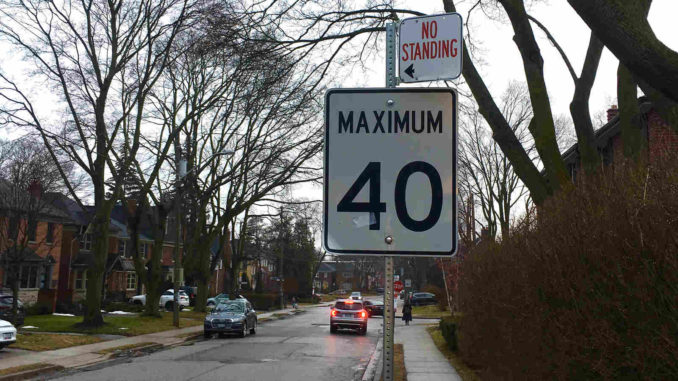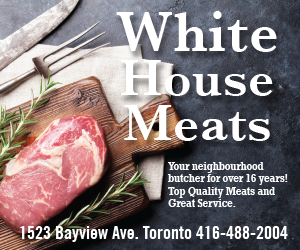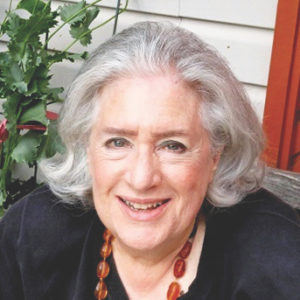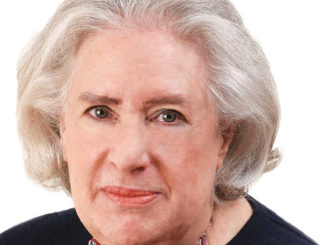
It used to be that Leasiders living on quiet streets felt relatively unscathed by traffic speed or volume, and were unsympathetic to those of us who lived on the neighbourhood’s busier streets. If we complained – “you knew when you moved there that it was a busy street,” they’d say.
Fast forward to now. Residents of Leaside complain about speeding drivers and increased traffic volumes on every street. Commuters and retail traffic cut through Leaside seeking ever more creative ways of avoiding the LRT construction along Eglinton, or the crowded Laird retail strip, by turning even the most inner residential streets into bypasses and through routes.
The situation has reached the point where all of us recognize the need to deal with this problem. We must acknowledge that unless we can reach a consensus on neighbourhood traffic control for the entire community – full area-wide protection – the quality of life, and our safety, will be eroded by ever greater car (and, increasingly, truck) traffic on all of our streets.
Comments made at the LPOA’s November 22nd AGM reinforce this need for action.
Councillor Burnside’s two traffic committees have been studying measures to provide relief during the lengthy LRT construction period for both North and South Leaside. The LPOA’s traffic committee, in contrast, is concentrating on neighbourhood traffic control measures which will be long term, continuing past the LRT construction.
It is time to develop a plan, choose options, and identify locations for effective use of high tech measures such as speed cameras. Should all of Leaside be designated a Community Safety Zone, with lowered speed limits, especially on entry points and not just around schools? The faster the car is travelling, the more likely that serious injury and damage will be the result. There is pending legislation which we can apply to make Leaside’s streets safer.
North Leaside’s street plan differs from that of South Leaside, so different approaches may be called for. Put these dates into your 2017 calendars: Wednesday, March 1, and Wednesday, March 8.
On March 1st, the LPOA Traffic Committee will hold a meeting for NORTH LEASIDE residents. We will be identifying intersections where there are feasible options, discuss what the most effective measures and strategies might be, and ask for your comments and suggestions.
On March 8th, we will hold a meeting for SOUTH Leaside residents. We will be asking you similar questions, and identifying measures tailored to the issues which you experience in the middle and southern part of Leaside.
Both meetings will be held in the William Lea Room at the Leaside Gardens arena, starting at 7:30 p.m. Details will be posted on the LPOA website and publicized locally. And I’ll remind you in upcoming columns!
At some point after that, we intend to hold a Leaside-wide meeting to present the results of both meetings.
With your buy-in on approaches to try out on our streets, we will be in a stronger position to get City approval. With your involvement, we can build momentum.
Here’s one idea to consider before those meetings: since so much of our flow-through traffic is a result of major developments being built or proposed on our periphery, should we be asking Councillor Burnside to support (and work to get the City to implement) a dedicated percentage of the Section 37 funds collected from these developments to fund local traffic measures and streetscaping?
In my previous two columns I mentioned the process currently underway, initiated by the province, to reform the Ontario Municipal Board. Town halls have been held across Ontario, seeking suggestions from the public. I’ve participated in two of these town halls. One of them had almost 300 attendees. Clearly, there’s an awful lot to reform!
You might say that we all spoke with one voice: the OMB is too costly, too rigid in its approach, too likely to ignore policies of democratically elected city councils; its decisions are all too often in favour of developers. The OMB’s rules prevent local residents who are planners, lawyers, architects, etc., from giving expert or opinion evidence in hearings (as local residents they’re not considered neutral), while paid consultants for the developer are considered unbiased. Minutes are not taken at hearings, with the adjudicator’s decisions based purely on his/her notes.
I could go on……
It’s good to know that the City of Toronto has recently moved in the direction of creating Local Appeal Boards to replace some of the functions of the OMB, but we await more information on how these two bodies would co-exist in real life. The province has promised new OMB legislation sometime in the spring of 2017. We’ll see what emerges from these consultations, and hope for at least some improvements.
Our next monthly LPOA board meeting is on Wednesday, January 4th at the Trace Manes building at 7:30 p.m. These meetings are always open to the public, and take place on the first Wednesday of each month. We invite you to attend, whether for help or advice on local matters, or just to listen.




